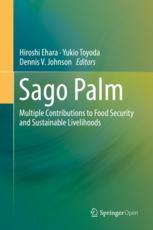

Most ebook files are in PDF format, so you can easily read them using various software such as Foxit Reader or directly on the Google Chrome browser.
Some ebook files are released by publishers in other formats such as .awz, .mobi, .epub, .fb2, etc. You may need to install specific software to read these formats on mobile/PC, such as Calibre.
Please read the tutorial at this link: https://ebookbell.com/faq
We offer FREE conversion to the popular formats you request; however, this may take some time. Therefore, right after payment, please email us, and we will try to provide the service as quickly as possible.
For some exceptional file formats or broken links (if any), please refrain from opening any disputes. Instead, email us first, and we will try to assist within a maximum of 6 hours.
EbookBell Team

4.4
42 reviewsThis book is open access under a CC BY 4.0 license.
This book addresses a wide variety of events and technologies concerning the sago palm, ranging from its botanical characteristics, culture and use to social conditions in the places where it is grown, in order to provide a record of research findings and to benefit society. It discusses various subjects, including the sago palm and related species; differentiation of species of starch-producing palm; habitat, morphological, physiological and growth characteristics; culture and management; productivity of carbon dioxide; starch extraction and manufacture; characteristics and utilization of starch; and cultural anthropological and folkloristic aspects.
Problems such as food shortages due to increasing populations, global warming and climate change, and decreasing reserves of oil and other underground resources, have become more pressing in recent years. In the context of these problems, the book examines the role of the sago palm in sustainable food production, in the manufacture of other foodstuffs, as a raw material for ethanol and in the manufacture of biodegradable plastics. In addition to academics, this book will be useful to researchers and government officials working for international agencies, national governments, municipalities, and other research organizations; technicians, researchers, managers, entrepreneurs, and others working in industries such as agriculture, plant production, food production, manufacturing, chemical engineering, energy production, and distribution.